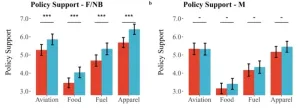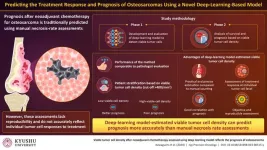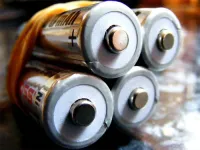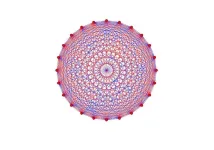(Press-News.org) Investments in mitigating climate change in many cases benefit future generations more than those alive today. However, initial costs must be borne by those living now, so many climate mitigation policies rely on some level of intergenerational altruism for support. To investigate the strength and shape of intergenerational altruism, Gustav Agneman and colleagues asked Swedish study participants to engage in an experimental task in which they allocated fictional resources across generations, after being told how many descendants they might be expected to have in the next 250 years. On average, participants allocated most of the resources to the present generation, and fewer and fewer resources to each subsequent generation in a nearly quasi-hyperbolic curve. Participants who allocated more resources to future generations showed stronger support for contemporary climate policies. In addition, those who engaged in the intergenerational resource allocation task supported climate policies more strongly than those who did not, suggesting that thinking about potential connections to future people reduces the perceived social distance of future people and increases willingness to bear some costs in the present to benefit people in the future. Finally, although all genders allocated resources between the generations in a similar manner, the authors find that the impact of participating in the intergenerational allocation task on support for climate policies is strongly significant for women and non-binary people, but not for men. The results could have implications for creating effective climate policy communications, according to the authors.
END
Intergenerational altruism and climate policy support
2024-04-02
ELSE PRESS RELEASES FROM THIS DATE:
Investigating the surface extraction of platinum catalysts in alkaline media
2024-04-02
The pursuit of carbon neutrality drives the exploration of clean energy sources, with hydrogen fuel cells emerging as a promising avenue. In these cells, hydrogen undergoes an electrochemical reaction with oxygen to produce electricity and water. Also, the reverse of this process, called electrolysis, can be used to split the abundantly available water to produce hydrogen and oxygen. These two technologies can work in tandem to provide a clean and renewable source of energy. A pivotal element in these two technologies is the platinum (Pt) electrode.
Hydrogen fuel cells consist of two electrodes: an anode and a cathode, with an ...
AI’s ability to detect tumor cells could be key to more accurate bone cancer prognoses
2024-04-02
Fukuoka, Japan - Researchers at Kyushu University have developed and validated a machine-learning model that can accurately evaluate the density of surviving tumor cells after treatment in pathological images of osteosarcoma—the most prevalent malignant bone tumor. The model can assess how individual tumor cells respond to treatment and can predict overall patient prognosis more reliably than conventional methods.
Surgery and chemotherapy have significantly improved the outcomes of patients with localized osteosarcoma. However, patients with advanced metastatic disease (the stage where cancerous cells have spread to distant tissues) have a low survival rate. ...
New materials discovered for safe, high-performance solid-state lithium-ion batteries
2024-04-02
All-solid-state lithium-ion (Li-ion) batteries with solid electrolytes are non-flammable and have higher energy density and transference numbers than those with liquid electrolytes. They are expected to take a share of the market for conventional liquid electrolyte Li-ion batteries, such as electric vehicles. However, despite these advantages, solid electrolytes have lower Li-ion conductivity and pose challenges in achieving adequate electrode-solid electrolyte contact. While sulfide-based solid electrolytes are conductive, they react with moisture to form toxic hydrogen disulfide. Therefore, there's ...
Mental health emergencies in kids were more severe during the pandemic
2024-04-02
A new study found that during the pandemic pediatric emergency departments (EDs) saw more children and adolescents who needed a psychiatric admission, as well as an increase in severe conditions, such as bipolar disorder, schizophrenia and substance use disorders. The higher demand for a psychiatric inpatient bed often exceeded availability, resulting in over 12-hour stays in the ED awaiting admission for nearly 20 percent of children with mental health emergencies in 2022, up from 7 percent before the pandemic. Findings were published in Academic Emergency Medicine.
“Our data shows that pediatric emergency departments saw more severe mental health presentations during the pandemic, ...
The math problem that took nearly a century to solve
2024-04-02
We’ve all been there: staring at a math test with a problem that seems impossible to solve. What if finding the solution to a problem took almost a century? For mathematicians who dabble in Ramsey theory, this is very much the case. In fact, little progress had been made in solving Ramsey problems since the 1930s.
Now, University of California San Diego researchers Jacques Verstraete and Sam Mattheus have found the answer to r(4,t), a longstanding Ramsey problem that has perplexed ...
When did the chicken cross the road? New evidence from Central Asia
2024-04-02
Chickens are one of the most economically important animals in the world today. However, the story of their origins and dispersal across the ancient world is still poorly understood. In fact, new archaeological techniques have recently led to the recognition that many finds of bones previously thought to represent early chickens in fact belonged to wild birds. Now, in a new publication, an international team of archaeologists, historians, and biomolecular scientists present the earliest clear evidence for the raising of chickens for egg production, and argue that the loss of seasonal egg laying was the main driver for the dispersal of domestic chickens across Eurasia and northeast Africa.
Using ...
A data representation method using distance correlation
2024-04-02
Association in-between features has been demonstrated to improve the representation ability of data. However, the original association data reconstruction method may face two issues: the dimension of reconstructed data is undoubtedly highly than that of original data, and adopted association measure method does not well balance effectiveness and efficiency.
To solve the problems, a research team led by Yuhua QIAN published their new research on 12 Mar 2024 in Frontiers of ...
Lundquist investigator Dr. Eiji Yoshihara awarded $3 million NIH R01 grant for diabetes stem cell therapy research
2024-04-02
The National Institute of Diabetes and Digestive and Kidney Diseases (NIDDK), a division of the National Institutes of Health, has granted Eiji Yoshihara, PhD, a principal investigator at The Lundquist Institute (TLI) and assistant professor at the David Geffen School of Medicine at UCLA, a five-year grant totaling $3 million. This prestigious NIH R01 grant, known for its rigorous peer-review process, is dedicated to advancing stem cell therapy research for treating diabetes.
Insulin-dependent diabetes, including autoimmune Type 1 and stress-induced Type 2, presents a significant health burden, often necessitating lifelong ...
YKT6 gene variants cause a new genetic disorder finds a new study
2024-04-02
A recent collaborative study has discovered rare variants in the YKT6 gene as the cause of a new neurological disorder characterized by developmental delays along with severe progressive liver disease and a potential risk for liver cancer. The study, published in Genetics in Medicine, was led by Dr. Hugo Bellen, Distinguished Service Professor at Baylor College of Medicine and Principal Investigator at the Jan and Dan Duncan Neurological Research Institute (Duncan NRI) at Texas Children’s Hospital, and Dr. Wendy Chung, the Chief of the Department of Pediatrics at Boston Children’s ...
Australia on track for unprecedented, decades-long megadroughts
2024-04-02
Australia could soon see megadroughts that last for more than 20 years, according to new modelling from The Australian National University (ANU) and the ARC Centre of Excellence for Climate Extremes.
The researchers’ bleak findings are before factoring in human impact on the climate since the Industrial Revolution. The ANU-led team also found that 20th century droughts in southwestern and eastern Australia, including the Murray-Darling Basin, were longer on average compared to pre-industrial times.
According to the scientists, the findings paint a worrying picture of future droughts in Australia that are far worse than anything in recent experience.
Megadroughts are exceptionally ...









